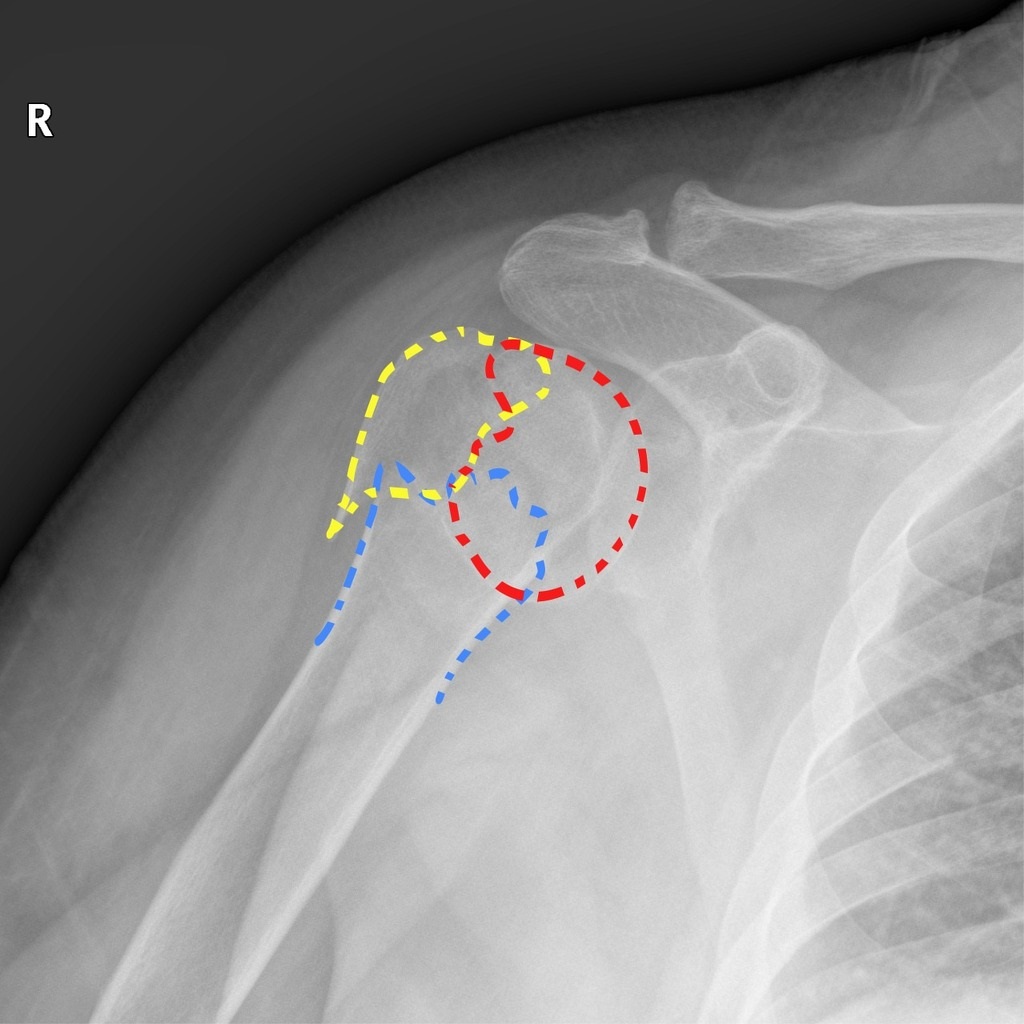AO classification of proximal humerus fracture
Jump to navigation
Jump to search

Editor-In-Chief: C. Michael Gibson, M.S., M.D. [1]; Associate Editor(s)-in-Chief: Mohammadmain Rezazadehsaatlou[2].
Overview[1][2]
The injuries of the ball-and-socket shoulder joint considered as the Proximal humerus fracture. It is more common among the elderly population following a low energy trauma such as falling. Meanwhile, A few people experience the axillary nerve damage such as reduced sensation around the middle deltoid and/or axillary artery involvement.
AO classification of proximal humerus fracture
| AO classification of proximal humerus fractures: | |
|---|---|
| type A: extra-articular unifocal (either tuberosity +/- surgical neck of the humerus) |
|
| type B: extra-articular bifocal (both tuberosities +/- surgical neck of the humerus or glenohumerus dislocation) |
|
| type C: extra-articular (anatomical neck) but compromise the vascular supply of the articular segment |
|
Related Chapters
See also
- AO classification of proximal humerus fracture
- Neer classification
- Proximal humerus fracture
- Distal humerus fracture
- Humeral_shaft_fracture
- Humerus fracture
References
- ↑ Stone MA, Namdari S (April 2019). "Surgical Considerations in the Treatment of Osteoporotic Proximal Humerus Fractures". Orthop. Clin. North Am. 50 (2): 223–231. doi:10.1016/j.ocl.2018.10.005. PMID 30850080.
- ↑ Lin KM, James EW, Spitzer E, Fabricant PD (February 2018). "Pediatric and adolescent anterior shoulder instability: clinical management of first-time dislocators". Curr. Opin. Pediatr. 30 (1): 49–56. doi:10.1097/MOP.0000000000000566. PMID 29135565.